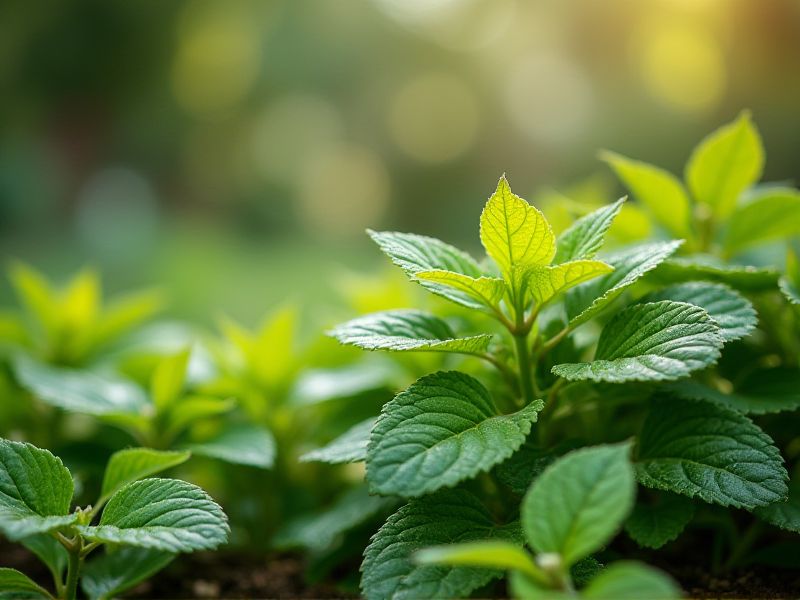
Ornamental plants such as succulents, cacti, and air plants thrive in low-water environments, making them perfect for xeriscaping. These drought-resistant species exhibit unique adaptations, allowing them to store water in their leaves, stems, or roots. Popular choices include Echeveria, Aloe vera, and Haworthia, each providing vibrant colors and textures without the need for frequent irrigation. Using ornamental plants that require minimal watering not only conserves water but also promotes a sustainable landscape design. By selecting these hardy varieties, you can create a stunning garden that remains vibrant even in dry conditions.
List of some Ornamental plants that need little water
- Lavender (Lavandula)
- Rosemary (Rosmarinus officinalis)
- Bougainvillea (Bougainvillea spectabilis)
- Agave (Agave americana)
- Aloe Vera (Aloe barbadensis miller)
- Yucca (Yucca filamentosa)
- Succulent (Sedum spp.)
- Oleander (Nerium oleander)
- Sage (Salvia officinalis)
- California Poppy (Eschscholzia californica)
Important things about Ornamental plants that need little water
Drought Tolerance
Drought-tolerant ornamental plants are ideal for water-conscious gardeners seeking to create sustainable landscapes. Species such as succulents, ornamental grasses, and native perennials are not only beautiful but also require minimal irrigation, making them perfect for arid climates. For instance, the Mediterranean herb rosemary and the vibrant purple coneflower exhibit resilience to dry conditions and thrive with little maintenance. By incorporating such plants into your garden, you contribute to water conservation while enjoying a visually appealing outdoor space.
Low Maintenance
Ornamental plants that require minimal water are ideal for gardeners looking to reduce maintenance while enhancing their landscape. Succulents, such as Aloe Vera and Echeveria, thrive in arid conditions and offer unique shapes and vibrant colors. Drought-tolerant options like Lavender and Sedum provide not only aesthetic appeal but also attract pollinators, supporting your local ecosystem. Incorporating these low-water varieties into your garden can create a stunning display while conserving water resources effectively.
Native Species Benefits
Native ornamental plants require less water, making them an excellent choice for sustainable gardening. By choosing drought-resistant native species, you not only reduce water consumption but also support local ecosystems and wildlife. These plants are adapted to local climates and soil conditions, thriving without excessive irrigation. Incorporating native ornamental plants enhances your garden's aesthetic while promoting biodiversity and resilience in your landscape.
Ideal For Xeriscaping
Ornamental plants suited for xeriscaping include succulents like Agave and Sedum, known for their ability to store water and thrive in arid conditions. Native grasses such as Blue Grama and Buffalo Grass offer drought resistance while providing a lush appearance to your garden. Flowering plants like Echinacea and Lavender not only enhance visual appeal but also attract beneficial pollinators, contributing to biodiversity. Incorporating these low-water plants not only conserves resources but also creates a sustainable and vibrant landscape.
Soil Requirements
Ornamental plants that require minimal water thrive best in well-draining soils, such as sandy or loamy mixes that prevent water retention and root rot. Incorporating organic matter, like compost, enhances soil structure while providing essential nutrients that support drought-tolerant species. Many of these plants, such as succulents and certain perennials, benefit from a slightly alkaline pH level, typically between 6.0 and 7.5, which promotes healthy growth. When choosing the right soil, consider moisture-retentive granules or minerals to maintain a balance of dryness and hydration, allowing your ornamental plants to flourish.
Sunlight Needs
Ornamental plants that thrive in low-water conditions are ideal for sustainable landscaping and xeriscaping. Succulents like Echeveria and Aloe Vera are not only visually striking but also require minimal irrigation, making them perfect for dry climates. Native grasses such as Blue Fescue add texture without demanding much moisture, while drought-tolerant flowering plants like Lavender and Sedum bring vibrant color with reduced watering needs. By choosing these resilient species, you can create a beautiful and eco-friendly garden that conserves water and supports local biodiversity.
Pest Resistance
Ornamental plants that require minimal water, such as succulents and drought-tolerant perennials, exhibit remarkable pest resistance, making them ideal for low-maintenance gardens. Many of these species, including lavender and sedum, possess natural oils and compounds that deter common pests like aphids and spider mites. By selecting these resilient plants, you not only minimize water usage but also reduce the need for chemical pesticides, promoting a healthier garden ecosystem. Embracing these pest-resistant ornamental plants can enhance your landscape aesthetics while conserving resources.
Seasonal Changes
Ornamental plants such as succulents, drought-tolerant perennials, and Mediterranean varieties thrive in regions with seasonal changes and limited water availability. During the warmer months, these plants exhibit vibrant blooms and lush foliage, adapting to the increased sunlight and heat. In contrast, as seasons shift to cooler temperatures, they enter a dormant phase, requiring minimal moisture while maintaining their aesthetic appeal. By selecting these low-water ornamental options, you can enjoy a beautiful landscape year-round while conserving water resources.
Container Gardening Suitability
Ornamental plants like succulents, sedums, and lavender are ideal for container gardening with minimal water requirements, perfect for urban settings or arid climates. These drought-tolerant varieties thrive in well-drained soil and sunny locations, allowing you to enjoy vibrant blooms and foliage without the need for constant hydration. To enhance your container arrangement, consider incorporating decorative stones for drainage and visual appeal, as these can also help retain moisture in the soil. By selecting the right combination of plants, you can create a beautiful, low-maintenance garden that conserves water and withstands dry conditions.
Environmental Impact
Ornamental plants requiring minimal water, such as succulents and xerophytes, play a crucial role in promoting sustainable landscaping practices. These drought-resistant species not only conserve water resources but also help reduce the ecological footprint of gardening by minimizing irrigation needs. By selecting low-water ornamental plants, you can create a visually appealing garden that supports local wildlife and reduces maintenance efforts. Furthermore, incorporating these plants contributes to soil health, as their extensive root systems help prevent erosion and enhance nutrient retention.
